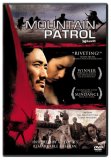Synopsis
In the mid 90’s, poachers are decimating the antelope population in the pristine lands of Kekexili. The locals have organized themselves to fight back, and now one of their patrolmen has been murdered by the poachers. Ga Yu, a journalist from Beijing, arrives to cover the story. Initially rejected by the leader of the mountain patrol, Ga Yu is taken in by the group when he suggests his coverage might help turn the area into a wilderness preserve. A long, grueling, dangerous manhunt ensues.>
The opening sets the impressive tone: the murder of the patrolman is understated, yet alarmingly brutal, and is accompanied by difficult-to-watch scenes of the antelopes being slaughtered. That this is a Chinese film set in Tibet raises, of course, some difficult ethical questions, but this should not be a deterrent from watching the film. If anything, they will enliven the discussions the film is sure to generate.
Audio
As I said, the tone is understated yet brutal. The audio is an integral element in the creation of that mood. Again referring to the opening scene, one hears subtle but distinct sounds emerging from all speakers. We don’t know at first what they are, and then they are revealed as bad trouble. This principle holds throughout: the sound design is somewhat spare but very effective. The music is spectacular, and the chanting has a very deep resonance.
Video
The picture features very strong colours, especially the reds, which stand out in the barren, bleached landscape. There is a tiny bit of visible edge enhancement, but this is really the only complaint I have. There is no grain, the blacks and flesh tones are excellent, and the image is very sharp.
Special Features
Some seven trailers (but not for the feature), and that’s it.
Closing Thoughts
This is another film so interesting that it cries out for some features, but what the heck. See the movie.





